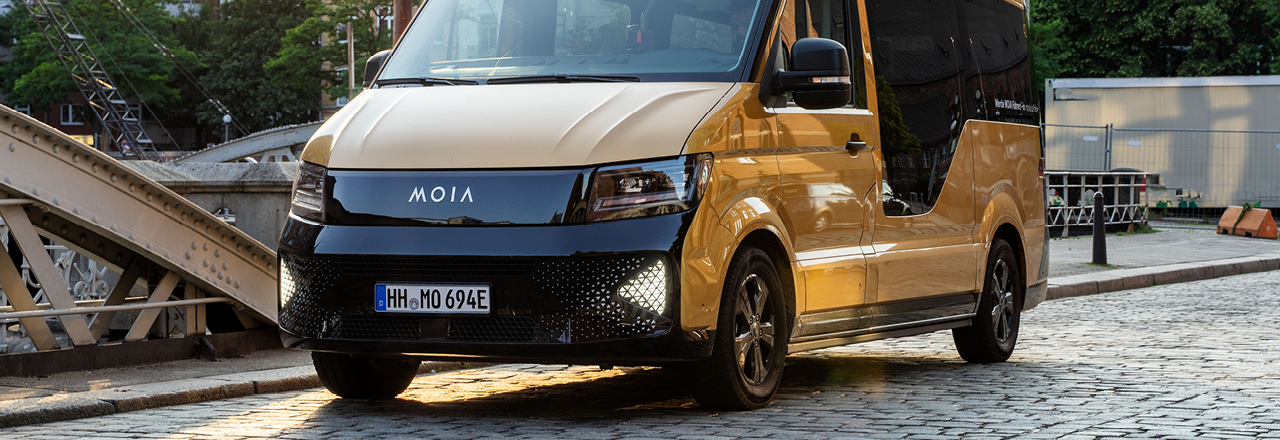Looking Glass 2024
Accelerating physical-digital convergence
Closing the gap between the real and the virtual
While automation has been a presence in industries like manufacturing and agriculture for decades, never has its reach and impact extended so far into the physical world — and the trend is only set to accelerate.
The previous generation of automation was contained within embedded systems that were often subject to physical constraints; for example, robots confined to a single assembly line, or those that struggled with pathfinding when confronted by a wall. But newer sensors and tools are capable of not just mapping and penetrating physical space over a far wider area, but of also recreating that space digitally with astonishing fidelity.
Today, this lens lends itself to a variety of applications that are likely to be most relevant to organizations with a clear connection to the physical environment, but we expect it to impact any organization which is not a pure digital play. New agriculture systems capable of measuring the soil and applying water and fertilizer in optimal proportions are improving crop yields, demonstrating the extent and precision to which the digital can now alter, and even enhance, the physical world.
Digital twins, or detailed digital representations of physical objects in their real-world context, are being used in sectors like aerospace to monitor and evaluate the performance of equipment, flagging potential problems before they appear in reality.
This convergence of environments requires more holistic thinking. High-quality data needs to be available and shared, because systems won’t be able to make intelligent decisions without it. In the past, engineers working on embedded systems would most likely sit in one building while those tasked with building an engine or vehicle worked in another, but now functions should come together to build and run products that span both worlds.

We’re past the inflection point in the adoption curve of connected devices: we’ve gone through some of the early crazy IoT ideas, the pushback and reached that point where we’re seeing genuinely useful innovations.
We’re past the inflection point in the adoption curve of connected devices: we’ve gone through some of the early crazy IoT ideas, the pushback and reached that point where we’re seeing genuinely useful innovations.
Signals
The expansion of autonomous vehicles. While not without controversy or setbacks, driverless vehicles continue to take to the roads in greater numbers and in more locations. Robotaxi pioneers Waymo and Cruise are reportedly mulling expansions to Los Angeles, Texas and even Japan. They’re also pushing the development of new sensor technologies in the process.
Smart farming that drives results. Startups like Israel’s BloomX are blending digital and physical systems and blanketing farms in technology to mimic and improve on natural processes like pollination. These innovations have the potential to improve output and mitigate some of the challenges climate change poses to the agricultural sector.
The emergence of new platforms in manufacturing. Research from analysts such as Gartner suggests the density and variety of robots in the typical warehousing or manufacturing operation is set to surge, with nearly all such firms planning to expand their robot workforces. As these ‘fleets’ are made up of machines from various vendors, a category of software is emerging that is capable of integrating and communicating with all of them to coordinate their work. This is what Gartner calls ‘multi-agent orchestration platforms.’
Even more proactive maintenance. Developments in artificial intelligence are elevating the practice of predictive maintenance, with companies like Shell applying AI to analyze historical data and real-time sensor readings to assemble a more granular picture of the health and performance of their assets. This is further enhancing their ability to identify points of failure before failures actually occur.
Trends to watch
Adopt
-
Using virtual environments to test and model desired physical outcomes in an industrial context.
Analyze
Anticipate
-
A collective term for systems and devices that can recognize, interpret, process, simulate and respond to human emotions.
-
A device that reads and analyzes signals from the brain and turns them into an input mechanism for a computer. The human and the device, after a period of training, work together to encode and decode human intentions.
Adopt
Analyze
Anticipate
The opportunities
By getting ahead of the curve on this lens, organizations can:
Conserve resources and reduce risks. All indications suggest that moving towards more real-time monitoring of assets and using data analysis or simulations to identify potential weak links in the production process can have a near-immediate impact. One study by PwC of companies in Europe found the average firm implementing predictive maintenance registered a 9% bump in uptime and a 12% reduction in costs, as well as a double-digit decrease in risks like health and safety.
Smooth the path to better output. Beyond boosting yields by making the process more efficient and less error-prone, as seen in the case of smart farming, the physical-digital convergence is optimizing the production process by vastly reducing the costs and complexity of prototyping and testing.
Enhance, and respond to, customer experience. While full-scale automation may provoke more skepticism, studies show consumers are responding positively to targeted technology-based solutions that reduce challenges in the physical world, such as blind spot warning and lane assist systems in vehicles, or smart homes that promote energy efficiency. Data from the use of such systems can also provide insights into customer behavior and engagement that can be used to refine products further.
Contribute to sustainability goals. Hybrid physical-digital environments promise to help firms reduce their environmental impact in myriad ways, whether by optimizing the use of resources like land, water and energy; reducing the number of times parts or machines need to be trashed and replaced; or minimizing the need to run real-world tests on physical objects or prototypes.


What we've done
Making autonomous vehicles a reality with MOIA
Though autonomous vehicles face various physical, regulatory and psychological barriers to widespread adoption, progress is being pushed by innovative firms like this Volkswagen-affiliated ride-pooling provider, which enlisted our help to test out scenarios to make autonomous vehicles part of their fleet. After developing a number of simulations that extended MOIA’s capabilities to deploy and manage these vehicles quickly, safely and seamlessly, Thoughtworks is now supporting their rollout to real-world settings, using data and devices to measure how they respond to complex road conditions and traffic challenges.
Actionable advice
Things to do (Adopt)
Understand that physical-digital convergence applies to you, unless your enterprise is a pure digital play (that is, produces no physical output). There will be use cases for your organization; the question is where the most relevant ones lie and which should be implemented first.
- Consider the evolving digital sphere when thinking about your physical footprint. Many of the people working on physical tasks that could formerly be performed largely in isolation and in a self-contained way — for example, planting explosives in construction or drilling in mining — will need to be connected to and interact with teams creating software and designing systems that manage the increasingly essential digital aspects of these processes.
Things to consider (Analyze)
- Look for opportunities to improve physical processes by taking advantage of how technologies are developing. Sensors and actuators, in particular, are far more precise and powerful than they were even a few years ago. Companies are focused not just on making them smaller, so they can be embedded in even more devices, but ensuring they can operate independently and deliver more granular data.
Things to watch for (Anticipate)
Monitor compliance and regulations around fields like automation and the internet of things (IoT), which are likely to increase as digitally-enabled devices grow more sophisticated, intelligent and potentially intrusive.
- Pay attention to the moves and initiatives of tech firms, governments and peers in the space. As there is only one physical reality, organizations will effectively be forced to adopt whatever technologies or protocols emerge as standards are established in areas like data transfer and sensor communications. Adopting and sticking to the wrong standards or technologies could see the enterprise effectively cut off.
















